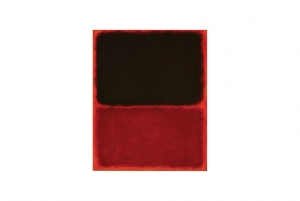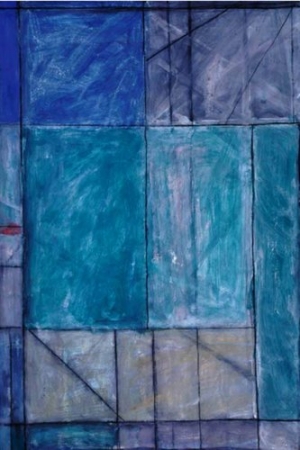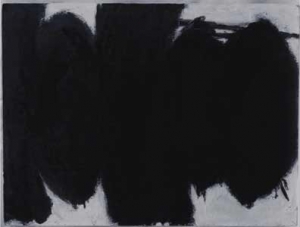|
Displaying items by tag: Knoedler

Las Vegas billionaire Frank Fertitta III is suing a respected Swiss curator accused of standing behind the authenticity of a Mark Rothko painting that turned out to be a fake. Feritta acquired “Untitled (Orange, Red and Blue)” from New York’s disgraced Knoedler gallery in 2008. He paid $7.2 million for the canvas.
Oliver Wick, a Swiss Rotko expert and specialist in American paintings, received $300,000 for the sale. According to court documents, Wick “was aware of substantial evidence that the painting was a forgery” and “conducted no independent research into the authenticity of this fake Rotko.” The painting had been exhibited at the Fondation Beyeler museum in Basel, Switzerland, where Wick was a curator.
Knoedler, which closed in 2011, has been accused by multiple clients of selling forged paintings. The forgeries, which were presented as authentic works by Rothko, Jackson Pollock, Robert Motherwell, Franz Kline, and Willem de Kooning, had been painted by a Queens-based Chinese artist and sold to Knoedler by Glafira Rosales, a Long Island art dealer. Rosales pleaded guilty to nine charges, including wire fraud, tax fraud, and money laundering, last September. During her 15-year scheme, Rosales swindled unsuspecting customers out of over $80 million.

A few months after the abstract painter Richard Diebenkorn died in 1993 his family visited Knoedler & Company, the gallery on the Upper East Side of Manhattan that had long been his dealer. His wife, Phyllis; his daughter, Gretchen; and an art scholar went to see two gouache drawings that the gallery had recently acquired and that it hoped to sell as works from Diebenkorn’s celebrated Ocean Park series.
What happened at the meeting nearly two decades ago is now a matter of dispute, one that has only grown in significance as the gallery, once venerable and now closed, battles accusations that it sold many works of modern art that were actually sophisticated forgeries.
The Diebenkorn family says it made it plain that day, before the drawings were sold, that it suspected the drawings were fakes.
“They didn’t look quite right, and we said, ‘The provenance is wacky and the story behind the provenance makes no sense,’ ” said Richard Grant, the artist’s son-in-law and the executive director of the Diebenkorn Foundation.
The gallery and its former president, Ann Freedman, say the family embraced the drawings as legitimate.
“We have definitive documentary evidence,” said Nicholas Gravante Jr., Ms. Freedman’s lawyer, including a copy of a 1995 letter from the gallery to the family members “confirming that they had viewed and authenticated the works Ms. Freedman showed them as being by Diebenkorn.”
For months Knoedler has been buffeted by accusations that it failed to check sufficiently the authenticity of more than 20 paintings it promoted as the work of Modernist masters. Now, in the matter of these Diebenkorn works, Mr. Grant said that Knoedler intentionally overlooked adverse information in order to sell the two drawings, and perhaps eight others, that he says it wrongly attributed to Diebenkorn. Most of them were not shown to the family, he said.
While the gallery and Ms. Freedman deny the accusations, the art scholar who accompanied the Diebenkorn family that day in 1993 said he could confirm the family’s account. “This was a long time ago, but I can remember standing in the room at Knoedler, particularly Phyllis and I looking at them,” said the scholar, John Elderfield, a former curator at the Museum of Modern Art who still assists the family in reviewing artworks. “We did express doubt.”
The drawings in question were two of five sold by Knoedler as Diebenkorns that came from a man who would not say where he had gotten them, Mr. Grant said. The family also disputes the authenticity of another five drawings that Knoedler sold in the 1990s as part of the Ocean Park series and were said to have come from a second source, a Madrid gallery called Vijande, now shuttered.
Knoedler and Ms. Freedman declined to discuss the Diebenkorn matter, including the provenance of the drawings or how many were sold.

Just as the number of fakes connected to German forger Wolfgang Beltracchi keeps growing (see below), the scandal that has engulfed the Knoedler gallery, and the doubts being cast over works by US abstract expressionists including Jackson Pollock and Robert Motherwell, goes from bad to worse.
Last month, hedge fund manager Pierre Lagrange filed a complaint in a Manhattan federal court against the Knoedler gallery and its former director, Ann Freedman, alleging that the gallery sold him a forged Pollock painting for $17m in November 2007.
This follows the recent, highly public dispute between art dealer Marc Blondeau, Julian Weissman, a former associate director of the Knoedler gallery, and the Dedalus Foundation, which represents the Motherwell estate. Blondeau bought a work attributed to Motherwell entitled Spanish Elegy, dated 1953, from Weissman after the Dedalus Foundation had deemed it to be authentic. In 2009, after forensic analysis, the Dedalus Foundation changed its mind, which resulted in all three ending up in court. This was settled in October 2011: the work was stamped as a forgery (see box below) and both Blondeau and the Dedalus Foundation received compensation. The Lagrange case is ongoing, while a federal investigation into the possible forgeries of works by artists including Mark Rothko, Willem de Kooning, Clyfford Still, Franz Kline, Richard Diebenkorn and Barnett Newman, is under way.
Legal papers and testimonies also suggest a number of leading art galleries have unwittingly been caught up in the scandals. Timothy Taylor Gallery and art dealer Jaime Frankfurt are named in the Lagrange papers as intermediaries in the sale of the Pollock. Court papers filed by the Dedalus Foundation state that Haunch of Venison opened its New York space in 2008 with a show that “put [a] supposed Newman painting from the so-called David Herbert collection [see box] in place of honour”. The current whereabouts of this work is unclear.
Authentication
Both cases and the Beltracchi investigation lay bare the inherent problems of authenticating works of art in an industry reliant on reputation and trust—and the apparent ease with which determined forgers can pass works through the system.
“This is very scary stuff,” says one prominent New York collector. “These are all people we know, and have been dealing with for years.” Blondeau, who was also a victim of Beltracchi, says that: “We are facing a very serious problem, especially because markets are so overheated—historically, when markets are strong, forgeries appear.” He adds of his own involvement: “I was fooled—the works were an incredible quality.”
|
|
|
|
|